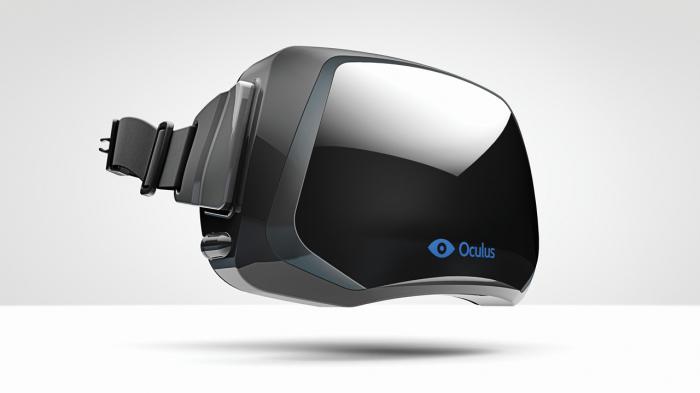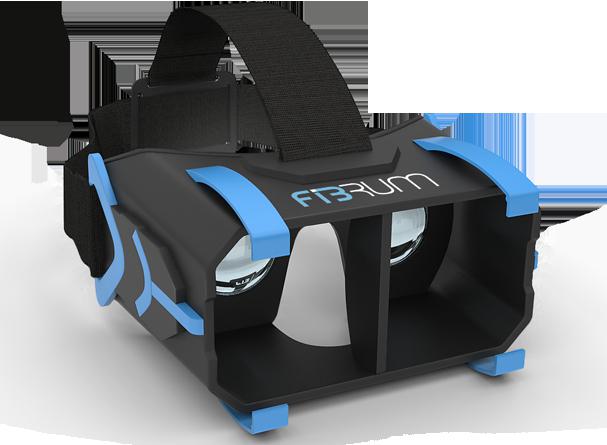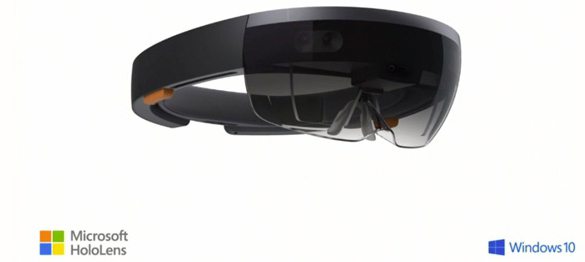Virtual reality glasses, oddly enough, are not a new invention in the IT industry, but at the same time one of those that are considered the most technologically advanced today. Leading global brands invest huge resources in the development of such devices. A new market niche is being formed. What are the specifics of devices designed to immerse the user in virtual reality? Is it possible to assemble a similar device for a lover of digital technology on their own?
What are virtual reality glasses?
The development of the IT industry is accompanied by the appearance on the market of the most unusual solutions. But the language will not be called a virtual reality gaming glasses curiosity: such devices are on sale in a wide range of varieties. The devices in question are intended for visualization of a multimedia stream, usually in 3D format, with the aim of creating the user a sense of presence in the game or other graphic environment.
Virtual reality glasses for PC or mobile devices can be presented in various technological modifications. In some cases, they are called helmets if they are supposed to be made in the form of a device that needs to be worn like an appropriate device. In many contexts, the terms “glasses” and “helmet” will not be a mistake; they can even be considered synonyms.
Correlation with augmented reality devices
An important nuance: the devices in question and the glasses (or helmets) of augmented reality are not the same thing. How to correlate these types of devices depends on the methodology adopted in a particular IT community. According to a common approach, augmented reality glasses should be considered a subspecies of virtual. The argument is the following - in the structure of the corresponding visual images, one way or another, there is a digital environment that disappears after removing the glasses.
In accordance with another interpretation, virtual and augmented reality glasses are completely different devices. The argument is the basis of visualization in devices of the first type, fully digital. In augmented reality glasses, the basis of the environment is the real, natural human environment.
For clarity, in our article we will consider examples of devices of both types. We agree that they can be assigned to one category - virtual reality glasses, that is, we will take the first methodology as a basis.
Oculus rift
Among the most famous and best-selling solutions today are Oculus Rift virtual reality goggles. They were created in the USA, their developers are Palmer Lucky, a military engineer, and John Carmack, who created such games as Wolfenstein, Doom and Quake, which are known throughout the world. Oculus Rift virtual reality goggles are also sometimes referred to as helmets. They belong to full-fledged virtual solutions - the user's visual environment is completely digital.

Like the helmets used by the Air Force pilots, the device can respond to head movements. The viewing angle in the device is about 100 degrees, while many competitive solutions can provide an indicator of only 45 degrees. The user's head position is tracked with high frequency. The helmet allows a person to feel like a character in a computer game in the first person, and not as a subject of control of the hero from the screen. The following sensors are used in the device: gyroscope, accelerometer, infrared sensors, and also a magnetometer.
The device is complemented by a set of development tools that allow programmers to create software adapted to certain types of digital devices and operating systems. Now Oculus virtual reality glasses are compatible with the world's most popular user OS for PC - Windows, Linux, Mac OS X.
Samsung Gear VR
The above device is intended for PC users. What are the virtual reality glasses for a smartphone in the modern IT market? Among them is the Samsung Gear VR device. This device can also be classified as a helmet. It went on sale at the end of 2014. There is a version that the developers of the Oculus Rift glasses took part in the creation of the helmet.
The technical characteristics of the Korean device are to some extent similar to those of the American development we have reviewed above. So, 3D glasses of virtual reality for mobile devices, developed by Samsung, function, providing a large viewing angle of 96 degrees. They have a built-in accelerometer and gyroscope.
A helmet cannot work separately from a smartphone, so its functionality for the most part depends on the capabilities of the corresponding type of mobile gadget. In this case, it is the smartphone, most likely, it is more correct to consider as an integral part of virtual reality glasses. The corresponding type of mobile device is inserted into the device by means of a special mounting mechanism.
How is the virtual reality helmet from Samsung controlled? Very simple. On its body there is a special touch panel that responds to touch by fingers. In addition, control in the virtual space is carried out by turning the head - and in many cases, this can be limited to without using the touch panel.
As soon as the device is launched, virtual tiles are opened to the user’s gaze, allowing you to run applications. The names of some of them are noteworthy - Oculus 360 Photos, Oculus Cinema. It is possible that the assumptions of those IT experts who believe that the specialists who created the Oculus virtual reality glasses took part in the development of the device have much in common with reality.
Fibrum
Foreign IT-brands have prepared a decent response and Russian developers. A Fibrum device was created in Kazan, which also belongs to the category of virtual reality helmets. Its developer is Ilya Flaks. The idea to create such a solution came to him in 2013. By that time, Flux was an experienced computer game developer.

The principle of operation of Russian virtual reality glasses is quite close to the concept implemented in the Korean device. The fact is that as the screen in Fibrum, just like in the device from Samsung, a smartphone is used. This may be a device with a screen with a diagonal of 4-6 inches. Using special lenses, virtual reality is created. Glasses are even suitable for people who have vision problems. You can use the device with myopia or farsightedness from minus 5 to plus 5 diopters. Like the devices discussed above, the Russian development is equipped with a gyroscope and accelerometer. These modules, as well as a number of software algorithms implemented in glasses, allow you to track the position of the user's head.
Fibrum: features and sales prospects
Agreements on facilitating the marketing presence of the Kazan brand in the IT market were concluded with re: Store, as well as Samsung and Sony. Fibrum developers have released several of their own games for the device. It is expected that an additional SDK for the device will be released soon. The main distinguishing feature of Fibrum is its compatibility with the phone on any platform, Android, iOS or Windows Phone. Under development - a Bluetooth module to control the device.
The devices we have examined that create virtual reality: Oculus glasses, Samsung Gear VR, Russian Fibrum - successful products. But there are noteworthy solutions that are still under development, but undoubtedly deserve attention.
Microsoft HoloLens
Among the most anticipated devices are Microsoft HoloLens virtual reality glasses. They relate precisely to the type of gadgets that build augmented reality. The main idea of the developers is to combine the physical world that surrounds a person with the virtual one.
Using Microsoft HoloLens virtual reality goggles, for example, you can create the illusion of having a large screen on the wall in your apartment, on which a movie will be broadcast or a computer game will be launched. The same effect is obtained when using the surface of a table, a refrigerator and any other flat object of sufficient size. Using the software built into the glasses, you can run games, create three-dimensional models, organize video conferences. The device functions thanks to a computing module and various types of sensors that scan the user's physical environment. The corresponding processor processes the corresponding signals.

The main feature of virtual glasses from Microsoft is that they do not have to be connected to a PC, they work independently from any digital devices. Visualization is built on the basis of holograms that are recorded in the gadget's memory. You can create them using special software - HoloStudio. It is also supposed to use this program using the device itself, controlling it with your fingers or through voice commands.
Microsoft's virtual reality goggles are expected to come along with the release of Windows 10 in 2015 or somewhat later. But the general public does not have accurate official data on this subject.
Games for virtual reality devices
Games for virtual reality glasses are created in huge numbers. Consider some examples. Among the popular ones is Half-Life 2, adapted for Oculus glasses. The well-known "shooter", which has become very widespread among gamers, moves from PC screens to virtual space. Through the controls of the Oculus helmet, the user can feel completely immersed in a digital environment.
Another popular game for virtual reality glasses is Euro Truck Simulator 2. It allows the user to feel like driving a truck. IT enthusiasts note the highest realism of the game, which is achieved thanks to the technologies implemented in the helmet. A person feels as if really moving along the road.
New emotions that arise among users of helmets and virtual reality goggles predetermine a completely different perception of seemingly outdated games that were produced not even for PCs, but for slot machines or set-top boxes. So, the New Retro Arcade package, adapted to the Oculus helmets, allows you to take a virtual walk through the machine gun hall with various games.
As we noted above, the developers of Russian virtual reality glasses Fibrum create their own games for the device. Among the noteworthy ones are Roller Coasters, An Unforgettable Journey, Feel Like a Cowboy.
Is it possible to make virtual glasses yourself?
The structural diagram of some of the solutions presented above may seem quite simple - it seems that you need only a smartphone and several lenses. Can I make virtual reality glasses with my own hands? Objectively speaking, this is not easy. If only because to perform such a task, narrow knowledge in the field of optics is needed. Huge financial resources have been invested in the development of the devices we have reviewed, largely aimed specifically at finding components for devices that are optimized in terms of interaction with the user's eyes.
However, the simplest concept, according to which you can try to make virtual reality glasses with your own hands, looks like this. We will need the following main components: a smartphone on the Android platform, on which the special Cardboard application, a cardboard box, a knife, adhesive tape, a ruler, and also a pencil should be installed. This scheme is very simple, we will not need any drawings of virtual reality glasses. At the same time, we will create a fairly workable model of the device.
First of all, we turn the box into an optimal case for virtual reality glasses. This is easy to do with scissors. The box should as a result have three walls (right, left and back, the front is not needed) and the bottom, the top is open.
The next component of homemade glasses is biconvex lenses. The more diopter they have, the better. Optimal lenses with a focal length of 40 mm. Cut holes for them in the box - in the back wall. Next, we fix the lenses using the tape we have prepared.
Then you need to “catch” the focus for the image that is broadcast on the smartphone. To do this, place it with the screen to the lenses, and then, moving in different directions, determine the point at which the image will be most clear. Using the Cardboard application, you can watch videos that in a certain way form a virtual space, or, for example, launch a panoramic program, such as Google Street View, with which you can take a virtual walk around a city.
Manufacturability requires investment
Of course, this is a very simple structure of virtual reality. Glasses in which world famous developers have invested significant resources are incomparably more functional. There is no gyroscope or accelerometer in our sample. It is highly recommended not to use homemade glasses for a long time - they will be assembled, obviously, without the participation of professional optics specialists and therefore will harm eyes.
Although a superficial, but still quite indicative impression of the operation of this type of device, we can collect glasses by the considered scheme and get it. We will also have an idea of how to make virtual reality glasses comparable in capabilities with the best world solutions. To do this, we will need lenses created with the participation of professional experts in optics, as well as a hardware and software system that allows you to track the movement of the user's head and organize convenient control of the system. But in order for us to have a competitive virtual reality, glasses should probably not be an amateur product, but a powerful business project.